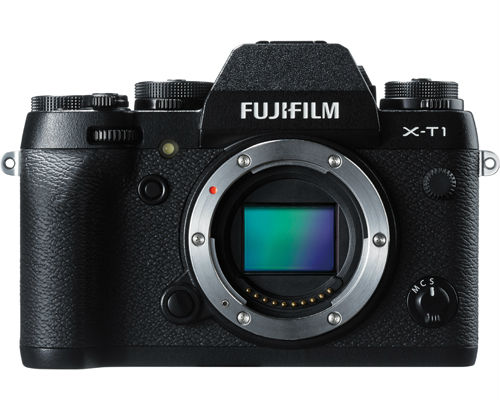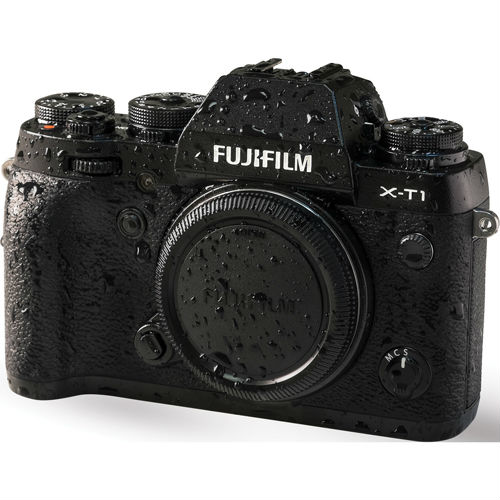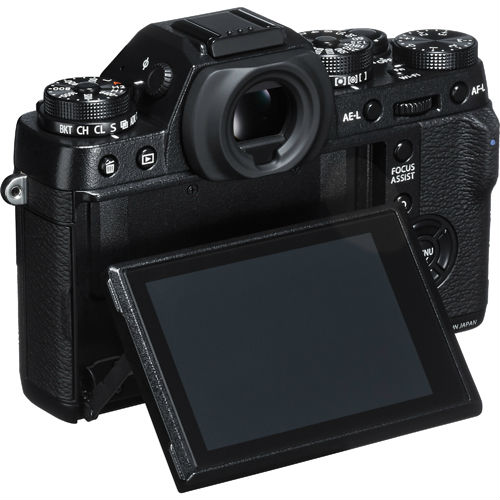 As the mirrorless (or compact system) camera segment has mushroomed over the last few years, one company has stood out from the rest for consistently releasing high-quality, stylish cameras that produce gorgeous images: Fujifilm. And although I firmly believe that the talent of the photographer is far more important than the equipment when it comes to making good (or effective, or meaningful, or emotive) photographs, there is still that element of synergy that I want to feel when I pick up a camera, that somehow this camera is the camera for me. And when I reach for a Fujifilm I immediately get the feeling that great things are possible.
As the mirrorless (or compact system) camera segment has mushroomed over the last few years, one company has stood out from the rest for consistently releasing high-quality, stylish cameras that produce gorgeous images: Fujifilm. And although I firmly believe that the talent of the photographer is far more important than the equipment when it comes to making good (or effective, or meaningful, or emotive) photographs, there is still that element of synergy that I want to feel when I pick up a camera, that somehow this camera is the camera for me. And when I reach for a Fujifilm I immediately get the feeling that great things are possible.
T Stands For Tough
So you won’t be surprised to hear that I was very excited when the Fujifilm X-T1 finally landed on my doorstep, after months of waiting and numerous coercive emails to my benevolent editor. And it didn’t really matter that the delivery guy dropped the box on the concrete steps like a sack of spuds, because the ‘T’ stands for ‘Tough’. The X-T1 is the most rugged, hard-wearing camera that Fujifilm has created to date. The body is made from die-cast magnesium, which gives it durability without adding extra weight. The X-T1 doesn’t feel clunky or unduly hefty in your hands, but the build quality is evident; every part and dial looks and feels like they were built to last.
Dust And Water Resistant
The camera is sealed in 80 different places to give it dust and water resistance. Interestingly, when it was first released there were no compatible weather resistant lenses. Fujifilm has finally caught up with itself however and now you have a choice of two zoom lenses: the beefy Fujinon XF50-140mm F2.8 R LM OIS WR and the XF18-135mm F3.5-5.6 R LM OIS WR, which came with the unit I was testing.
 Lots Of Manual Controls
Lots Of Manual Controls
One of the key design features of the X-T1 is the manual control dials on the top of the camera. There are three in total; one for the ISO, one for shutter speed, and one for exposure compensation. There’s a switch on the front that allows you to cycle between three focus modes: single, continuous, and manual. The on/off switch is integrated around the shutter release button and the video record button is located right next to it. On one side of the electronic viewfinder you get a diopter to compensate for near or far-sightedness and on the other side you have a little button to allow you to switch between the electronic viewfinder and the LCD screen. So Fujifilm have really gone all out to give you as many options as possible to operate the camera without using any menus at all, and that includes 6 customizable buttons which you can assign any function you like to.
Unique Aperture Control
You might have noticed that I haven’t mentioned aperture control yet. That’s because a number of Fujinon lenses come with an aperture control ring, which means aperture control happens on the lens rather than the body. It is kind of an old-school concept, but one that actually works really well. You don’t have to use the control ring though, in the menu items you can choose to control the aperture via a control ring located on the front of the body, and this is the default option for lenses that don’t have an aperture control ring.
Not A Camera For Learners
It’s probably obvious at this point that the X-T1 is not a camera for the beginner. It doesn’t have a dedicated automatic mode like most cameras. It doesn’t have a portrait mode or landscape mode or pretty flower mode. In fact it has just four operation modes: program, manual, shutter-priority and aperture-priority. Program mode is the closest thing to automatic, where you set the shutter dial, ISO dial and aperture control switch to ‘A’ and the camera chooses the appropriate values for you. You can, however, override the camera and choose your own shutter speed or aperture, which is very handy and a great way to learn through experimentation.
 A Purists Camera
A Purists Camera
I think it’s great that Fujifilm have tried to give as much manual control to the user, and I think it’s something that will really appeal to the purists, but even for the seasoned shooter it will take a bit of time and practice to get used to all those dials and controls. One of the things I didn’t love was the dial lock release buttons on the shutter speed dial and the ISO control dial. It seems counterintuitive to provide dials for ease of operation and then add a finicky little button you need to press in order to turn those dials.
Silent Shooting
I noticed on the Fujifilm website that with an upcoming firmware upgrade, the X-T1 will be able to shoot with an electronic shutter, meaning that the physical shutter will remain open and the exposure will be timed electronically. The benefits of this are completely silent shooting and a maximum shutter speed of 1/32,000th of a second, which is stunningly fast. The downside is that the shutter speed dial only goes up to 1/4000th of a second so when you enable electronic shooting mode the shutter speed will be controlled via the rear control dial, making the shutter speed dial on top redundant.
Amazing Electronic Viewfinder
One of the major selling features of the X-T1 is the electronic viewfinder, which is the biggest currently available on any mirrorless camera. I’ve said it many times in the past, but I am a big believer in the importance of learning to photograph with your eye to a viewfinder – it really helps you to get into the right mindset to compose your images effectively. And the viewfinder on the X-T1 is a joy to use. The eye-cup is big and comfortable, and the refresh rate is super fast which gives you a true-to-life experience. You also get a real-time preview of how your final image will look, so you know immediately if your exposure or white balance are off. Equally if you’re using one of the film simulation modes that will also be previewed. There’s also a very handy eye sensor which can detect when you put your eye to the camera and switch between LCD mode and electronic viewfinder mode.
The Fujifilm X-T1 is a serious camera for serious photographers. Yes it has some of that nice retro styling and also comes in a gorgeous graphite silver version, but this is a camera that was made to be used, not just to sling over your shoulder.
To my mind this is a milestone camera and I’m looking foward to seeing where Fujilfilm takes it in future releases.
[Correction: In the original version of the article, I mistakenly referred to the electronic viewfinder as an ‘optical viewfinder’. Thanks to member JHougaard for pointing this out!]



